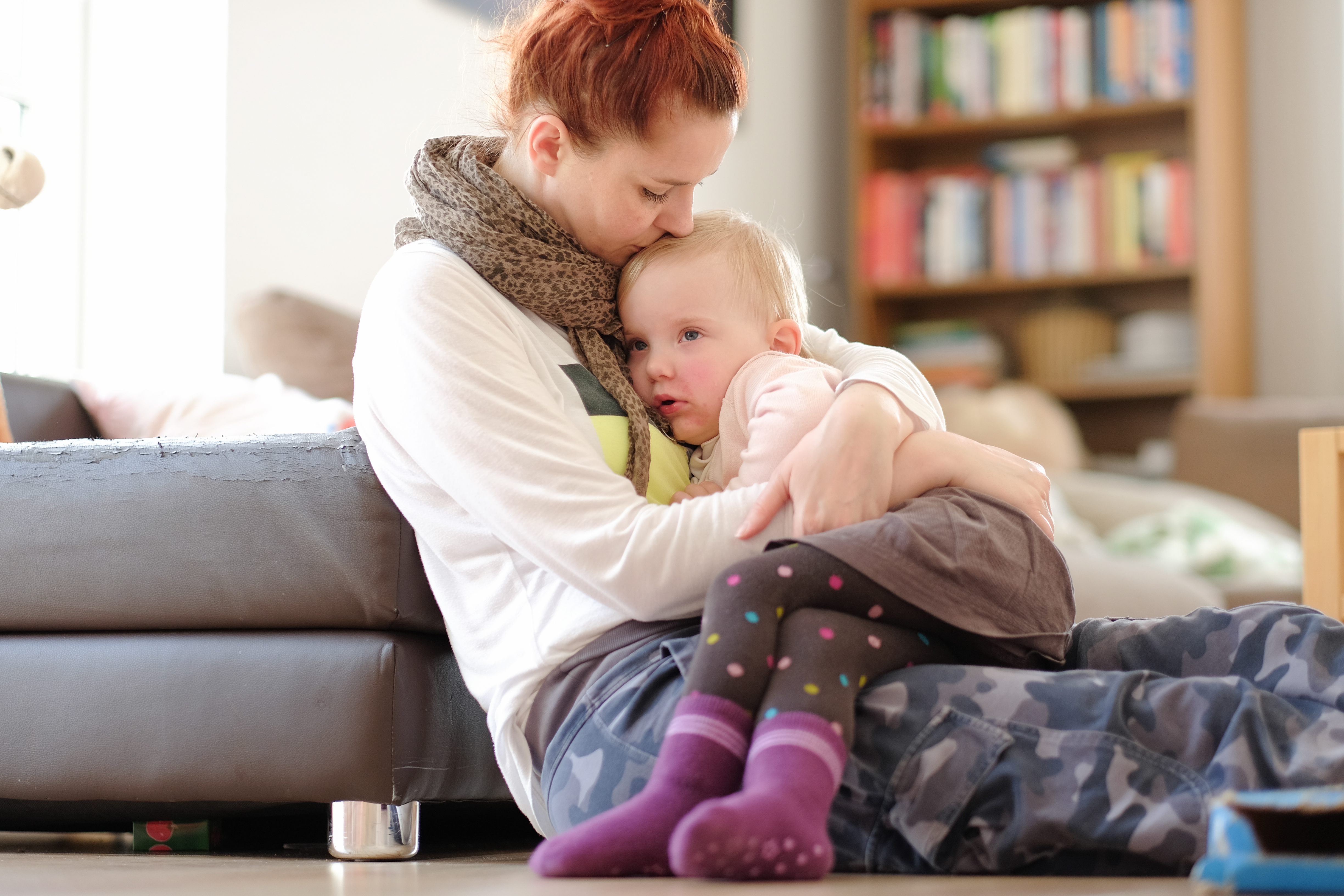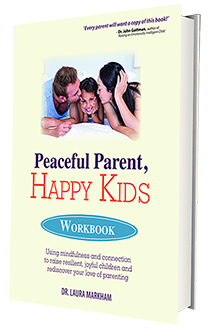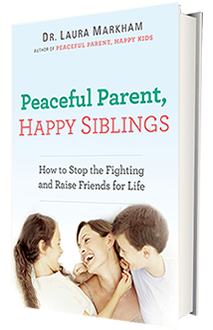
But sometimes your child is too far gone for a book. He lashes out and hits someone, or throws himself on the floor and howls.
You might be inclined to put your kid in her room until she can calm down. But that's giving her the message that her emotions are shameful -- not allowed in your house. What you really want is for her to learn that emotions are just part of being human, that she can notice and accept them -- and learn to express them in constructive ways.
That's not an easy thing to learn. Indeed, most adults aren't exactly constructive in how they express emotions. That's because most of us learned that our feelings were unacceptable, and we worked hard to repress them. So we still use food or screens to stuff them. But stuffed emotions don't stay stuffed -- they're always bubbling up to get healed. They're easily triggered -- and then they explode. That's when we adults have our own little temper tantrums.
Brain Development
If you want to teach your child more constructive ways to self-regulate, start by offering calm understanding when they show you those big emotions. Give them the message that they're safe, that you love them even when they're upset, that you want to help them through this moment. Then, after they're more calm, support them to solve whatever problem they're having. This approach is the foundation for your child accepting and then learning to manage their emotions. And that's the foundation of what we call "EQ" or Emotional Intelligence.
This approach of soothing your upset child isn't just a psychological learning. It helps your child build the neural circuits to calm themselves more readily. Every time you soothe your upset child, her body releases soothing hormones and neurotransmitters, which strengthens those self-soothing neural networks. Your child begins to develop "vagal tone," which means that the vagus nerve becomes more effective in calming the child's emotions when they're upset. That's the beginning of resilience, the ability to bounce back.
So every time you soothe your child and help him feel safe and understood, you're helping him build a brain and nervous system that will allow him to calm himself in the face of upset and adversity -- for the rest of his life.
And -- if your focus is, understandably, just on getting through the rest of the day -- loving your child through his upset builds trust and strengthens your relationship with your child, so he's more cooperative.
Co-Regulation
So you can see that when kids get dysregulated, they need a calm, warm adult to soothe them and help them feel safe. Experts call this "co-regulation." That just means that the child learns to self-regulate when the parent is self-regulated and helps the child feel safe, seen, soothed, understood. This starts in infancy, but kids are still learning it into the preschool years, and even older. (In fact, teens whose parents stay calm when they're upset develop better vagal tone, which means they learn to calm themselves faster.)
That's why I recommend using “time-in” when children get upset. That simply means that you stay with your child and help them calm down by loving them through their upset.
The Cozy Corner
But there are times when you can't take that time with your child. And over time, your child is capable of learning to calm herself. That's
why every home (and classroom) needs a “cozy corner” or a "comfort corner" where children can take themselves to calm down. This is simply
a comforting place where people in your home go to calm down.
Of course, you can't just order your child to the cozy corner. That would feel to your child like a time-out, not an opportunity to feel better. The parent is an essential part of a young child's co-regulation, which means that your child needs you if she's going to calm down. So when your child gets upset, get in the habit of taking her to the cozy corner and helping her to feel safe, soothed, seen, and understood.
Once your child gets used to your calming her in this cozy place, she will initiate using it herself when she needs to calm down.
You can decide where you want to locate your cozy corner, but then get your child to participate in adding elements that he will find soothing. It can have a big easy chair, a stuffed beanbag chair, or simply a fluffy rug. I recommend:
- A photo of your family. Research shows that when children see a photo of their trusted adult, it helps calm them.
- Stuffed animals
- A chart showing faces with different emotions
- Books about emotions
- A small jar of glitter to shake
- Bubbles (because blowing shifts us into deeper, slower breathing)
- Calming activities like small figures or sensory bags or boxes.
It’s also helpful for children to be able to play audios that take them through a guided meditation for children, which is a great soothing habit to begin in the early years. You could also make a short audio of your voice telling them how much you love them and singing a special song.
Can you take two children at once to the cozy corner? Sure. Just be sure there are two separate beanbag chairs or other cozy places, so they don’t fight over who sits where. Then, insist that the rule in the cozy corner is only soft voices.
But here's the most important thing to remember about a Calm-Down Corner. It's so important that I'm repeating it. If you send your child there, it feels like banishment, and your child will react just as she would to a "Naughty Step." No child wants to be sent away to calm down. That feels like a rejection.
So always go with your child, so she develops positive associations to the Cozy Corner. In fact, don't wait until your child is upset. Go to the cozy corner for quiet times, so your child gets used to this space as a soothing place to be, where the activities feel calming.
Then, when YOU get upset, model going to the cozy corner to calm down! Of course, your child can come with you.
You'll notice that once your child gets used to going to the cozy corner with you and savoring the comfort of a time-in there, she’ll begin to head there on her own when she's upset. And when you're busy calming her brother, you can actually give her hug and tell her you'll meet her in the cozy corner in a few minutes, and she'll go.
A miracle! But one that you've created.








